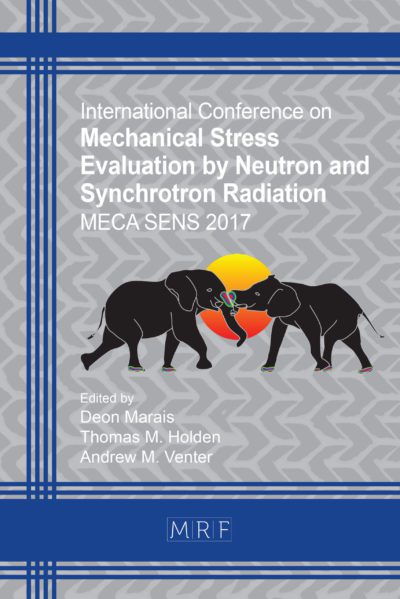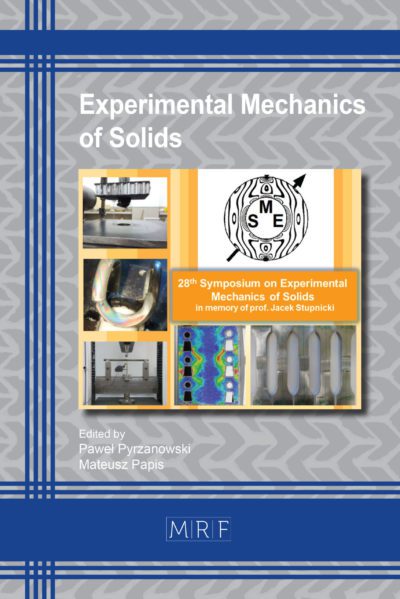Microstructure mastering and fatigue behavior of duplex stainless steel obtained with laser powder bed fusion
PIRAS Maxime, HOR Anis, CHARKALUK Eric
download PDFAbstract. Microstructure and mechanical behavior of duplex stainless steels (DSS) are well known when elaborated with conventional processes. Nowadays, many studies aimed to characterize this material for additive manufacturing (AM) processes like laser powder bed fusion (LPBF) [1], [2]. The as-built LPBF microstructure of this alloy is totally ferritic [1]. Heat treatments are therefore necessary to recover the duplex microstructure. These heat treatments need to be optimized. The effects of annealing heat treatments on the microstructure and mechanical behavior of DSS are now known [2], but the consequences on its fatigue strength need to be explored. In this study, firstly, the duplex microstructure will be controlled by heat treatments to obtain austenitic phase with different grain morphology. Then, the influence of microstructure on tensile high cycle fatigue behavior will be investigated. As a result, a microstructure with coarser austenite grains has no effect on fatigue behavior compared to the fully ferritic As-built material whereas the finer microstructure allows an improvement. Even if there is austenite phase improving the material ductility, fatigue damage initiation is always due to pore defects.
Keywords
LPBF, Microstructure, Fatigue Behavior, Duplex SAF 2507
Published online 4/24/2024, 10 pages
Copyright © 2024 by the author(s)
Published under license by Materials Research Forum LLC., Millersville PA, USA
Citation: PIRAS Maxime, HOR Anis, CHARKALUK Eric, Microstructure mastering and fatigue behavior of duplex stainless steel obtained with laser powder bed fusion, Materials Research Proceedings, Vol. 41, pp 290-299, 2024
DOI: https://doi.org/10.21741/9781644903131-33
The article was published as article 33 of the book Material Forming
![]() Content from this work may be used under the terms of the Creative Commons Attribution 3.0 license. Any further distribution of this work must maintain attribution to the author(s) and the title of the work, journal citation and DOI.
Content from this work may be used under the terms of the Creative Commons Attribution 3.0 license. Any further distribution of this work must maintain attribution to the author(s) and the title of the work, journal citation and DOI.
References
[1] K. Saeidi, L. Kevetkova, F. Lofaj, and Z. Shen, ‘Novel ferritic stainless steel formed by laser melting from duplex stainless steel powder with advanced mechanical properties and high ductility’, Mater. Sci. Eng. A, vol. 665, pp. 59–65, May 2016. https://doi.org/10.1016/j.msea.2016.04.027
[2] L. Becker et al., ‘Influence of annealing time on the microstructure and properties of additively manufactured X2CrNiMoN25-7-4 duplex stainless steel: Experiment and simulation’, Materialia, p. 101720, Feb. 2023. https://doi.org/10.1016/j.mtla.2023.101720
[3] R. N. Gunn, Duplex Stainless Steels Microstructure, Properties and Applications. Woodhead Publishing, 1997. doi: 10.1533/9781845698775.24
[4] M. Knyazeva and M. Pohl, ‘Duplex Steels: Part I: Genesis, Formation, Structure’, Metallogr. Microstruct. Anal., vol. 2, no. 2, pp. 113–121, Apr. 2013. https://doi.org/10.1007/s13632-013-0066-8
[5] I. Alvarez-Armas and S. Degallaix, Les aciers inoxydables duplex. in Traité MIM – Mécanique et Ingénierie des Matériaux Matériaux et métallurgie. Cachan: Hermès science publications, 2012.
[6] G. Chail and P. Kangas, ‘Super and hyper duplex stainless steels: structures, properties and applications’, Procedia Struct. Integr., vol. 2, pp. 1755–1762, Jan. 2016. https://doi.org/10.1016/j.prostr.2016.06.221
[7] T. DebRoy et al., ‘Additive manufacturing of metallic components – Process, structure and properties’, Prog. Mater. Sci., vol. 92, pp. 112–224, Mar. 2018. https://doi.org/10.1016/j.pmatsci.2017.10.001
[8] T. Mukherjee, J. S. Zuback, A. De, and T. DebRoy, ‘Printability of alloys for additive manufacturing’, Sci. Rep., vol. 6, no. 1, Art. no. 1, Jan. 2016. https://doi.org/10.1038/srep19717
[9] K. Davidson and S. Singamneni, ‘Selective Laser Melting of Duplex Stainless Steel Powders: An Investigation’, Mater. Manuf. Process., vol. 31, p. 150930095558007, Sep. 2015. https://doi.org/10.1080/10426914.2015.1090605
[10] F. Hengsbach et al., ‘Duplex stainless steel fabricated by selective laser melting – Microstructural and mechanical properties’, Mater. Des., vol. 133, pp. 136–142, Nov. 2017. https://doi.org/10.1016/j.matdes.2017.07.046
[11] S. Papula et al., ‘Selective Laser Melting of Duplex Stainless Steel 2205: Effect of Post-Processing Heat Treatment on Microstructure, Mechanical Properties, and Corrosion Resistance’, Materials, vol. 12, no. 15, Art. no. 15, Jan. 2019. https://doi.org/10.3390/ma12152468
[12] K. P. Davidson and S. B. Singamneni, ‘Metallographic evaluation of duplex stainless steel powders processed by selective laser melting’, Rapid Prototyp. J., vol. 23, no. 6, pp. 1146–1163, Jan. 2017. https://doi.org/10.1108/RPJ-04-2016-0053
[13] P. Murkute, S. Pasebani, and O. Burkan Isgor, ‘Metallurgical and Electrochemical Properties of Super Duplex Stainless Steel Clads on Low Carbon Steel Substrate produced with Laser Powder Bed Fusion’, Sci. Rep., vol. 10, no. 1, Art. no. 1, Jun. 2020. https://doi.org/10.1038/s41598-020-67249-2
[14] M. Laleh, A. E. Hughes, W. Xu, P. Cizek, and M. Y. Tan, ‘Unanticipated drastic decline in pitting corrosion resistance of additively manufactured 316L stainless steel after high-temperature post-processing’, Corros. Sci., vol. 165, p. 108412, Apr. 2020. https://doi.org/10.1016/j.corsci.2019.108412
[15] J. Kunz, A. Boontanom, S. Herzog, P. Suwanpinij, A. Kaletsch, and C. Broeckmann, ‘Influence of hot isostatic pressing post-treatment on the microstructure and mechanical behavior of standard and super duplex stainless steel produced by laser powder bed fusion’, Mater. Sci. Eng. A, vol. 794, p. 139806, Sep. 2020. https://doi.org/10.1016/j.msea.2020.139806
[16] K. Saeidi, S. Alvi, F. Lofaj, V. I. Petkov, and F. Akhtar, ‘Advanced Mechanical Strength in Post Heat Treated SLM 2507 at Room and High Temperature Promoted by Hard/Ductile Sigma Precipitates’, Metals, vol. 9, no. 2, Art. no. 2, Feb. 2019. https://doi.org/10.3390/met9020199

































